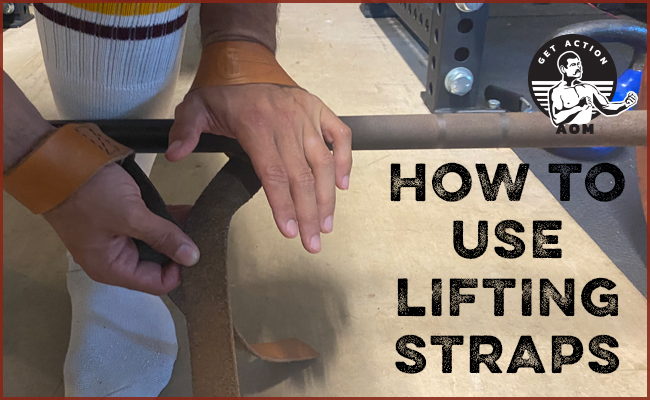
Lifts like the deadlift and barbell row are mainly back exercises. Both also secondarily strengthen your grip. Holding a heavy bar in your hands will do that. And a strong grip is pretty dang handy to have.
Yet no matter how much you strengthen your grip, its strength will never be on par with that of your back and trunk muscles. As a result, if you strength train long enough, you’ll eventually reach a point where your grip becomes a limiting factor in performing a deadlift or barbell row: In order to drive adaptation in your back muscles, you need to lift heavier weight at more reps, but while your back and trunk muscles can lift the weight, your grip isn’t strong enough to hold the weight.
What do you do?
Use lifting straps.
Today we’ll show you when and how to use them.
When to Use Lifting Straps
A novice lifter doesn’t need to use lifting straps. His grip strength is sufficient to hold the bar when deadlifting or doing the barbell row, even as he adds weight to the bar. And the beginning lifter needs to develop his natural grip strength.
I didn’t use lifting straps for the first two years of my serious training. I just used an alternate grip when deadlifting.
But around that time, I was beginning to deadlift above 400 lbs for sets of 5. My back muscles could pull the weight, but my grip started giving out at around rep 3 or 4. My grip became the limiting factor in being able to complete the lift.
So I started using lifting straps.
If you notice your grip giving out during the middle of a deadlift or barbell row set, it might be time to consider using lifting straps.
Today, I use straps regularly on heavy sets of deadlifts and rack pulls. I’ll occasionally use them on barbell rows.
I’ll start my warm-ups with no straps. Once I get above 405 lbs, I’ll put on the lifting straps and do the rest of my working sets with them.
When I do heavy singles, I don’t use straps. Because when you compete in the deadlift (which I do), you can’t use them. So to train my grip for that single heavy deadlift I use my hands alone.
That’s my take on when to use straps.
Wait as long as you can to start using them; use them only when you’re doing heavy work sets; don’t use them on heavy singles.
That’s worked for me.
How to Use Lifting Straps
Lifting straps are made from leather, canvas, and nylon and have a loop at the end. I’ve been using these leather lifting straps from Dominion Strength for awhile now and really like them.
Create Your Lifting Strap Loops

To create your right lifting strap, thread the bottom of the strap through the right side of the loop.
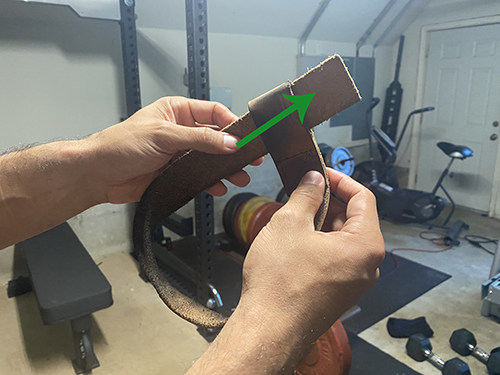
To create the left lifting strap, thread the bottom of the strap through the left side of the loop.
This will create larger loops that you’ll put your hands through.
Put Your Lifting Straps on Correctly
Place your right lifting strap on your right hand, and your left lifting strap on your left.
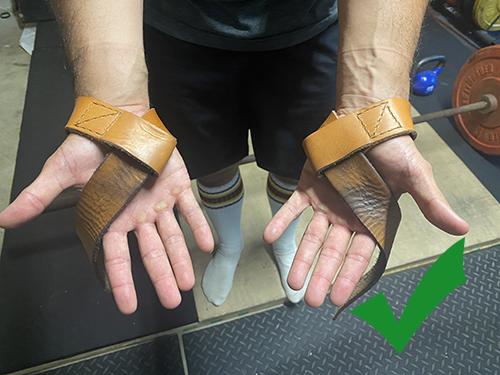
You’ll know you have the straps on correctly by the direction in which the ends of the straps lie across your hands. The right strap should be lying right; the left strap should be lying left.

Wrap Your Lifting Straps Around the Barbell
With your straps properly wrapped around your hands, you’re ready to wrap their ends around the barbell.
I always start off with the lifting strap on my non-dominant hand (left hand). That way, I can use my dominant hand to help me wrap the strap around the barbell.
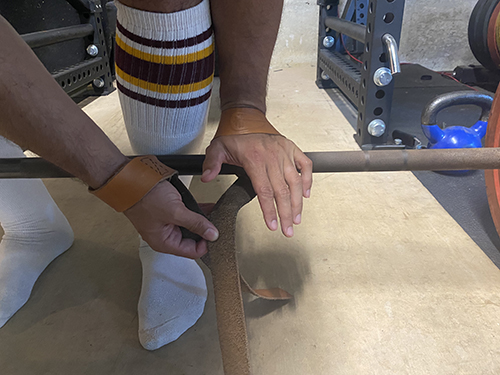
Put your hand on top of the bar and the strap beneath the bar.
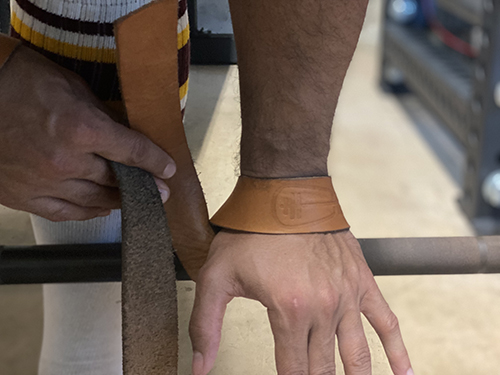
Pull the strap tight and wrap it once over the barbell. You only need to wrap it once! Once is enough.

Now grab the bar as you would normally. Bam!

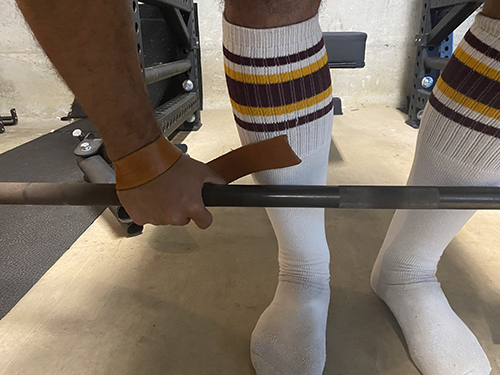
Now you need to wrap the lifting strap on the other hand. You’ll have to learn how to finagle this with just one hand since your other hand is already strapped to the barbell. It’s pretty easy once you get the hang of it.

Rotate the barbell backward to set and tighten the lifting straps.

Now pull the bar as you normally would, with perfect deadlift form.
To loosen the lifting straps, just let go of your grip on the barbell.
There you go. When and how to use lifting straps.







